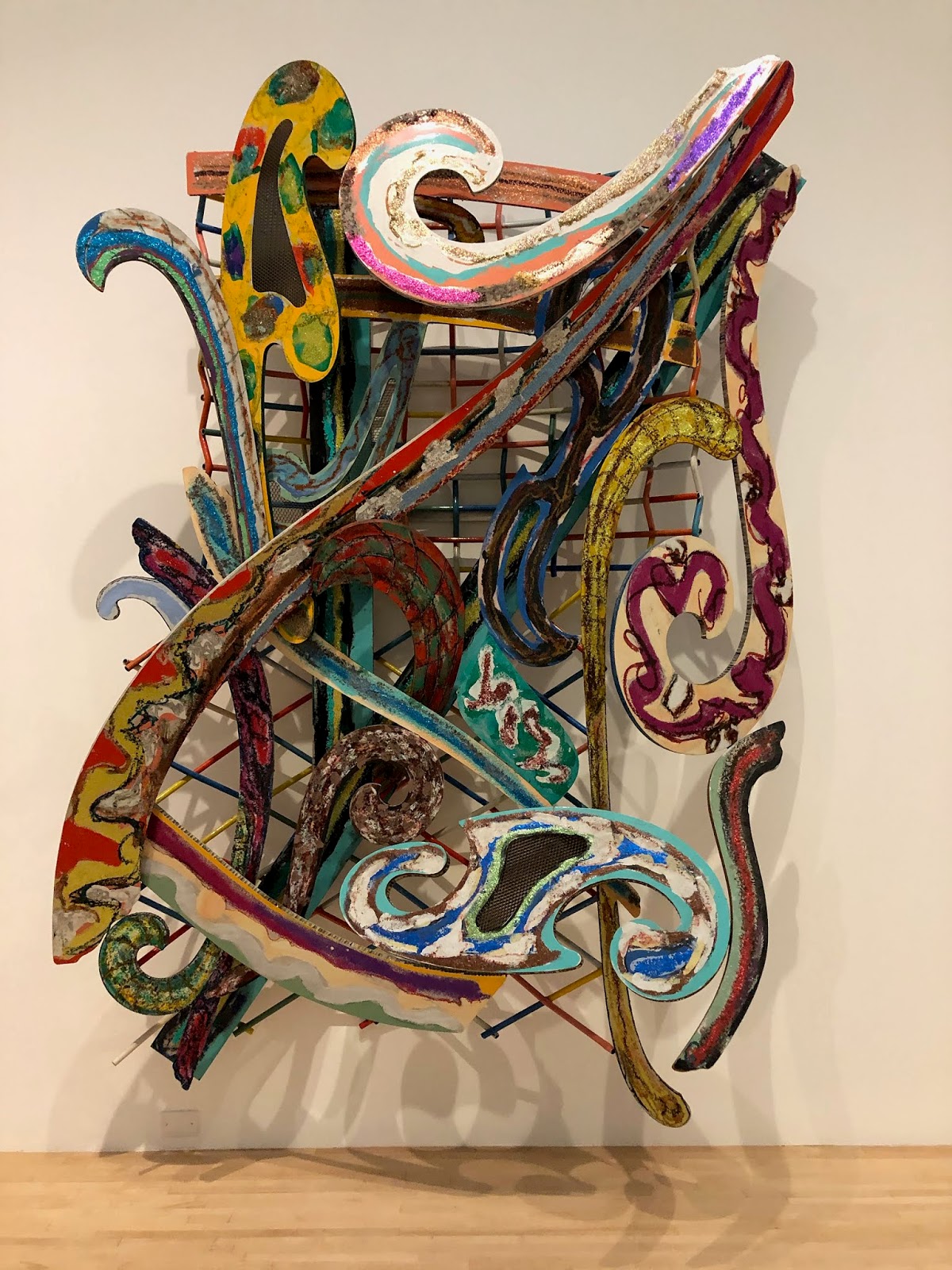Frank Stella Is Back (Huh?)
 |
| Frank Stella, Khar-pidda, 1978, in MOCA's "With Pleasure" |
Why Stella? Why now?
MOCA's "With Pleasure: Pattern and Decoration in American Art 1972–1985" presents Stella among a constellation of artists who responded to the P&D ethos without being part of the movement. He's shown alongside such figures as Billy Al Bengston, Al Loving, and Betty Woodman.
MOCA's exhibition labels remind us that P&D was the resistance to the art-world seriousness of its time. The big, disco-glitter Stella here in on loan from Philip Johnson's Glass House, no less.
The conversation between P&D and Stella went both ways. Valerie Jaudon's hard-edge paintings of the late 1970s draw on Islamic precedent while trolling the Stella protractors of the 1960s. Stella's protractors were named for cities in the ancient Near and Middle East.
 |
| Valerie Jaudon, Mineral Wells, 1980 |
 |
| Installation view of LACMA's 2019 "Frank Stella: Selections from the Permanent Collection," with protractor painting Hiragla Variation I, 1969, and WHOM (single), 1967 |
Huh?
 |
| Paul McCarthy, Karen Life Drawing, 1965–66 (detail), in the UCLA Hammer Museum's "Paul McCarthy Head Space, Drawings 1963–2019" |

Comments